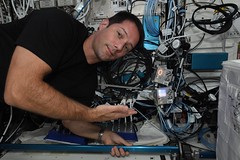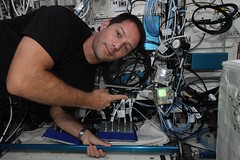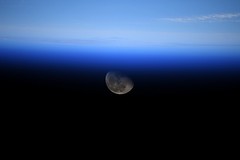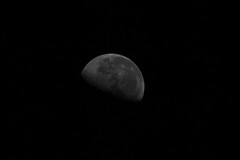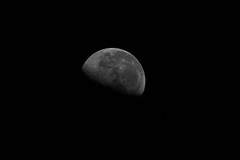Astro Pi tadaa!
vendredi 16 juillet 2021 à 19:22Thomas Pesquet posted a photo:
Nos petits AstroPi. Ces micro-ordinateurs basés sur un raspberrypi sont assez connus parmi les amateurs d’informatique. La fondation Raspberry Pi a été créée pour encourager les enfants à apprendre à coder. L’objectif est de développer les compétences en programmation des prochaines générations. Ils sont conçus pour être polyvalents et bon marché. En ce sens, ils répondent parfaitement à l’objectif de développement durable n°4 : assurer une éducation de qualité inclusive et équitable et promouvoir les possibilités d'apprentissage tout au long de la vie, pour tous. Ces petits ordinateurs sont tellement réussis qu’on les trouve jusque dans l’espace. Ils utilisent très peu d’énergie (donc on peut les laisser allumer autant qu’on veut) mais ils font à peu près tout comme un véritable ordinateur : prendre des photos, surveiller la température, afficher des messages, ou même recevoir des commandes vocales grâce à un microphone. La seule limite c’est la créativité de la personne qui l’utilise, et c’est une qualité dont les enfants débordent ! Grâce à AstroPi ils peuvent même faire tourner leur code dans l’espace, j’aurais trouvé ça assez cool quand j’étais jeune . AstroPi est un programme récurrent de l’ESA : si vous souhaitez impliquer votre classe, vous trouverez les renseignements ici www.astropi.org
Working with our little European Astro Pis. These little computers are based on the Raspberry Pis and well-known in the community of computer enthusiasts. The Raspberry Pi foundation was created to encourage children to learn coding and improve computer skills in the next generation. As a charity they were designed to be versatile and cheap to give access to all. They are are a great success and a good example of implementing Sustainable Development Goal 4: Ensure inclusive and equitable quality education and promote lifelong learning opportunities for all. The little computers do so well they are everywhere, including space! They use very little power (so can stay on at all times) but are versatile enough to do almost everything a normal computer can do. And this makes them great for use in space too! These little guys can take pictures, monitor the temperature, display messages to us and listen to commands or ambient noise with a microphone. And they’re kind of cute! The only limit to what can be done is creativity, and that's where children come in. How cool is it that you can be coding software to run in space while still at school! The future is now :wink:. See how to apply and get your school involved : www.astropi.org
Credits: ESA/NASA–T. Pesquet
607C1690
